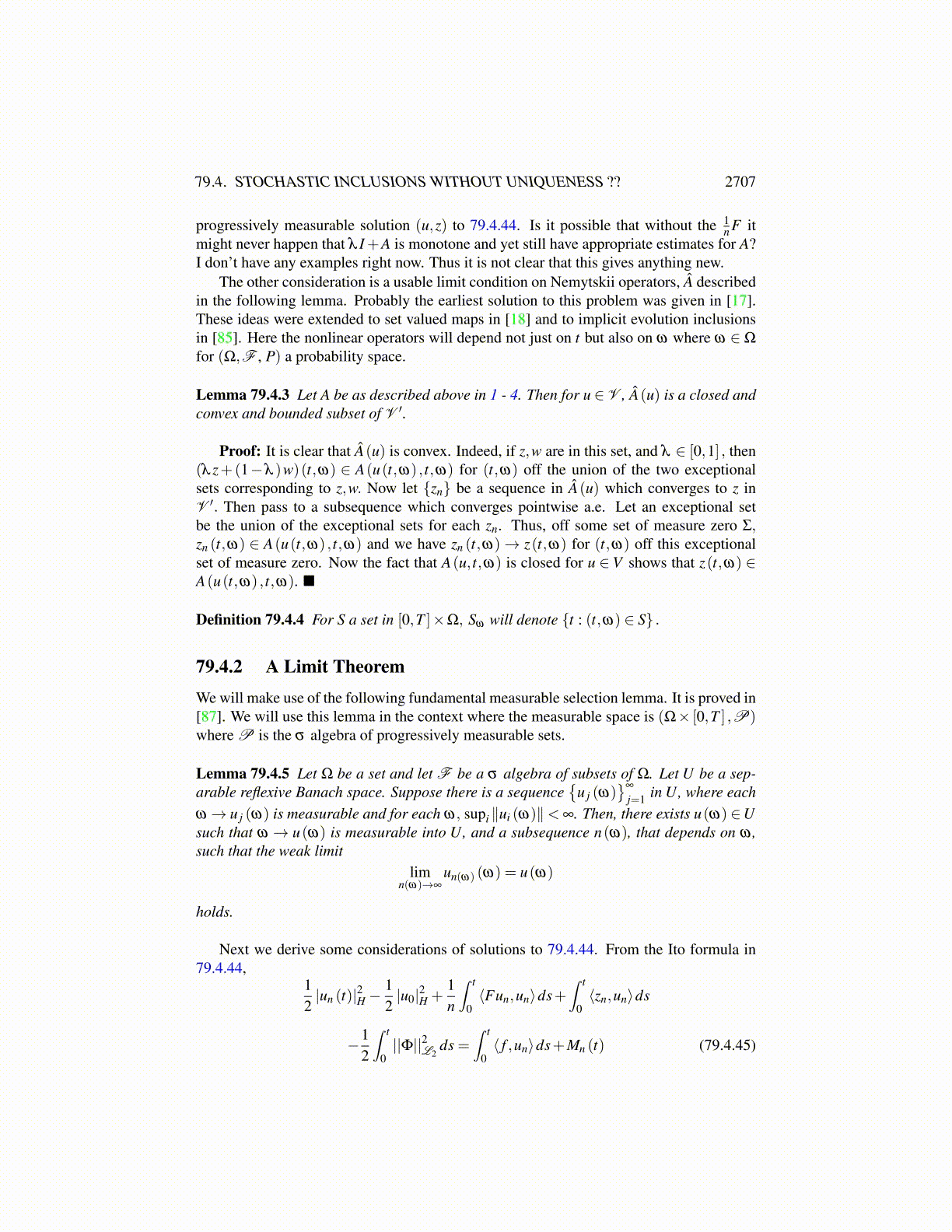
79.4. STOCHASTIC INCLUSIONS WITHOUT UNIQUENESS ?? 2707
1. A(·, t,ω) : V →P (V ′) is pseudomonotone and bounded: A(u, t,ω) is a closed con-vex set for each (t,ω), u→ A(u, t,ω) is bounded, and if un→ u weakly and
lim supn→∞
⟨zn,un−u⟩ ≤ 0,zn ∈ A(un, t,ω)
then for any v ∈V,
lim infn→∞⟨zn,un− v⟩ ≥ ⟨z(v) ,u− v⟩ some z(v) ∈ A(u, t,ω)
2. A(·, t,ω) satisfies the estimates: There exists b1 ≥ 0 and b2 ≥ 0, such that
||z||V ′ ≤ b1 ||u||p−1V +b2 (t,ω) , (79.4.42)
for all z ∈ A(u, t,ω) , b2 (·, ·) ∈ Lp′ ([0,T ]×Ω).
3. There exists a positive constant b3 and a nonnegative function b4 that is B ([0,T ])×FT measurable and also b4 (·, ·) ∈ L1 ([0,T ]×Ω), such that for some λ ≥ 0,
infz∈A(u,t,ω)
⟨z,u⟩ ≥ b3 ||u||pV −b4 (t,ω)−λ |u|2H . (79.4.43)
One can often reduce to the case that λ = 0 by using an exponential shift argument.
4. The mapping (t,ω)→ A(u(t,ω) , t,ω) is measurable in the sense that
(t,ω)→ A(u(t,ω) , t,ω)
is a progressively measurable multifunction with respect to P whenever (t,ω)→u(t,ω) is in V ≡ V p ≡ Lp ([0,T ]×Ω;V,P) .
As mentioned one can often reduce to the case where λ = 0 in 3. Indeed, let A(u, t,ω)be single valued for the sake of simplicity. Let
w = e−λ tu
where u satisfies
u(t)−u0 +1n
∫ t
0Fuds+
∫ t
0A(u, t,ω)ds =
∫ t
0f ds+
∫ t
0ΦdW,
Then this amounts to(u−
∫ (·)
0ΦdW
)′+
1n
Fu+A(u, t,ω) = f , u(0) = u0
In terms of w, this is(eλ (·)w− eλ (·)
∫ (·)
0e−λ (·)
ΦdW)′
+1n
F(
eλ (·)w)+A
(eλ (·)w, t,ω
)= f , u(0) = u0